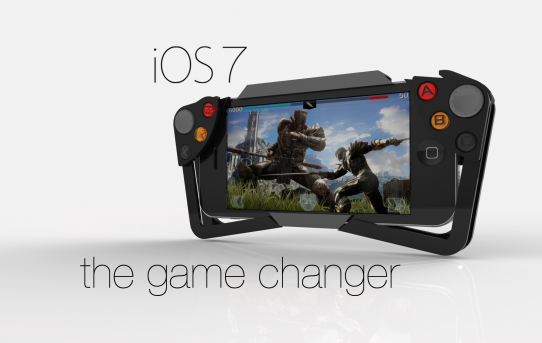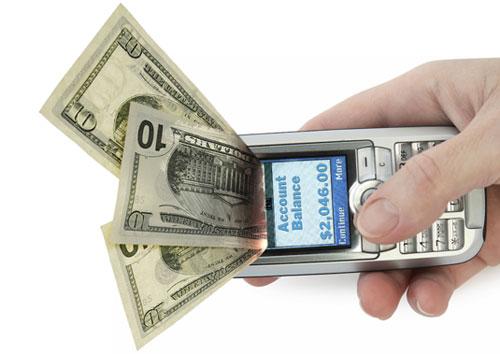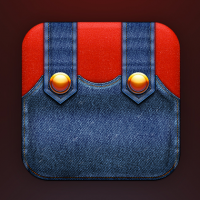We’re proud to say that we’ve been INCREDIBLY busy with the launch of Pokémon GO, an understatement considering the social phenomenon it has become in just a week since launch! The news cycle was dominated by the game, as we’ve outlined below, and all of us at TriplePoint have also been busy exploring the world in search of our favorite Pokémon. Head to our website at www.triplepointpr.com for a little Easter Egg, and input the Konami code for a pleasant surprise. Continue reading TriplePoints of Interest – Week of July 11 – Featuring Pokémon GO!!!
Tag: Android
TriplePoints of Interest – Week of June 8
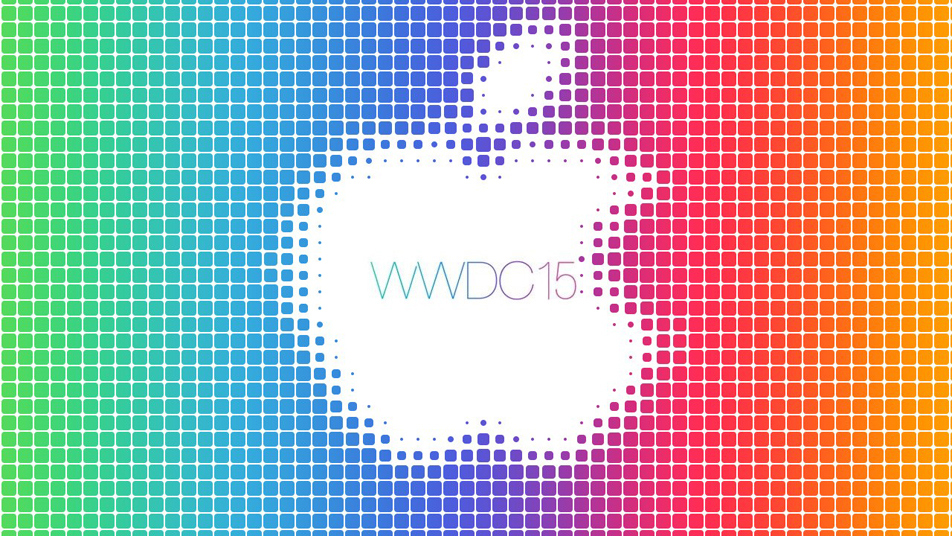
What juicy pre-E3 news did we uncover this week? The main event was WWDC and then VR stole the show! Who’s going to be checking out some VR hardware at the show this year?!
Looking fine, iOS 9!
Now it’s Apple’s turn! WWDC made waves yet again with iOS 9 among other announcements. Miss the big reveals? The Next Web has you covered with a summary of all the splashes. Tech Times has a summary of Metal, which allows for better graphics rendering and thus smoother scrolling for users. According to writer, Lauren Keating, 2K, Blizzard, and Aspyr are among the developers using it to enhance their apps.
The Vainglorious Apple Design Awards
In other WWDC news, Apple announced the winners of this year’s Apple Design Awards. Crossy Road, Vainglory, and Mediocre Games’ (creator of Smash Hit) Does Not Commute were among the winners, says CNET.
Green Robot is on a Rampage!
App Annie reported this week that Android has surpassed iOS in growth this month, seeing a 50% rise in global consumer spending versus iOS’s 30%, says GamesIndustry International. Writer, Matthew Handrahan, credits multiplayer games as a great driver of spending, with 60% of consumer spending coming from multiplayer titles.
See you at the inaugural TwitchCon 2015!
Twitch announced their panel line up for their inaugural TwitchCon event, says GamesIndustry International. Subjects to be covered include the legality of Let’s Play videos and streams, using Twitch as a fundraising platform, and tips to building healthy communities.
ESPN is Legendary!
ESPN released a long-form piece profiling famed South Korean League of Legends player, Lee “Faker” Sang-hyeok, and the culture of eSports in the country. Writer, Mina Kimes, visited the headquarters of his team, SK Telecom T1, in Seoul and followed him on his road to the year’s first major international tournament, Mid-Season Invitational tournament in Tallahassee, FL. According to Daily Dot, this article is set to appear in a special ESPN The Magazine issue that will dive deeper into video games, featuring NFL player, Marshawn Lynch on the front cover for his upcoming appearance in Call of Duty: Black Ops III.
The Oculus Rift is spawning soon!
The Oculus Rift in its final form was revealed yesterday with a view of its launch model and controller. WIRED has the full photo gallery, along with the release time frame of Q1 2016. Kotaku also has the list of games that will be released for the device.
Image from BGR
Smartphone Game Controllers – More of a Game Changer Than You Think
Ask any game developer on iOS and Android today about the challenges they face in succeeding (i.e. turning a profit, making a sustainable living), and chances are there will be expressions of frustration and negativity. Save for companies that have already established themselves in the mobile marketplace and can afford to build and sustain a customer base, an overwhelming majority will never see a penny of profit.
At the same time, the mobile game market is at a crossroads. On one hand, you have casual experiences being churned out that can be monetized through growth hacking, a.k.a. the ability to target, but and convert players into paying customers. On the other hand, unique game experiences with deep and engaging levels of gameplay that can appeal to true “gamers” are finding it incredibly challenging to succeed, experiences that might command an upfront payment for a quality experience, one that such gamers are willing to pay.
Yet, the touchscreen experience doesn’t match the deep level of gameplay that sufficiently satisfies the needs of the average gamer. A few hours of playing a serious shooter, and you’re left with finger burn and a crooked wrist. This is why I adamantly support Nintendo’s strategy to continue building out their own platform with dedicated portable consoles, but that’s best left said in another blog post that I previously wrote.
While these challenges will persist in the near future, there is a bright spot in the mobile industry, steadily growing to help push development of high quality, deep gaming experiences that consumers might be willing to pay for – Bluetooth game controllers. Yes, multiple companies exist that provide such solutions, such as Green Throttle, Nyko, MOGA and others, but the tipping point will come with native integration of controller support by Apple and Google.
We already know about Apple’s controller API released with iOS 7, one that any developer can integrate into their game to support any wireless Bluetooth game controller. Google can’t be far behind, and we can be confident that we’ll see the support in the next year, at the most.
Free-to-play games rule the roost, and likely will for some time to come, if not permanently. This has allowed companies with the most capital to execute “growth hacking” techniques weighed heavily on user acquisition to build and sustain a player base. This has unfortunately led to an incredibly difficult marketplace for less capable developers to navigate and get discovered, especially the indie tier where the best ideas are generated and the least analytical capabilities lie. And we certainly can’t count on a quality game to succeed based on a one-time payment model. Free-to-play becomes even more challenging for the serious gamers, an incredibly difficult balance to manage in avoidance of pay-to-win perceptions.
As for “quality” games following the paid download model, $1.99 is unfortunately the maximum a majority of smartphone gamers will pay, with $9.99 and $19.99 being special price points for console ports – generally not optimal experiences built from the ground up for the touchscreen.
With universal game controller support built into iOS and Android, we can count on gamers playing for longer periods of time. With such higher engagements, developers can build deeper experiences with flexible game mechanics and backstories that have gamers investing tens of hours of time. Such game experiences are why 35 million gamers around the globe own a 3DS, and games that sell for $40 each sell in the millions within several days of release. These are the games, like Grand Theft Auto V and Call of Duty, that smash entertainment sales records, surpassing movies and music. Many of these games just wouldn’t work on a free-to-play model.
We’ve witnessed a variety of companies enter the market to disrupt the console business, most of which have been categorized as “microconsoles”, dedicated set-top box hardware usually build on top of Linux/Android. Yet, I can’t help but think that the last thing developers need to worry about right now is another platform, particularly one with little install base to justify the additional resource investment.
Why the need for a microconsole, when we all already own one, sitting right in our pocket? The smartphone and tablet, both iOS and Android, will quickly displace the need for dedicated microconsoles that offer the same value. Connectivity to the TV an issue? Tap and stream, enabled by Apple TV and, soon, the likes of Chromecast, will eliminate this hurdle for mainstream consumers. Don’t worry about the gamers – they’re savvy enough to make it happen now, as long as they have a reason to.
To summarize why I’m optimistic about the smartphone and tablet gaming space for the future of gaming:
1.) Native integration of controllers accelerating developer adoption into games.
2.) Games built from the ground up with controller support can lean on deeper experiences that please core gamers.
3.) High quality game experiences that can be played for hours (and avoid finger burn) can command premium price points and not rely on free-to-play access and conversion.
4.) Smartphone and tablets significantly increasing in power and capabilities can offer an experience that pleases the core gamer.
5.) One-tap streaming from smartphones/tablets to TV will all but eliminate the need for dedicated consoles tethered to the TV.
6.) More freedom and flexibility for gamers – one game file and experience no matter where you are, whether played on the road or on your living room TV.
I truly believe that there’s still a bright future ahead for experiences that gamers can enjoy and would be willing to pay a premium price point for on mobile devices. The hurdles that face development and adoption of such titles is a technology challenge already being solved in the form of native controller support and mobile-to-TV streaming. This is an exciting opportunity for developers to harness and create rich game experiences that meets the behaviors and consumption habits of gamers both casual and core. For all the gamers out there, we get to enjoy great games using the hardware that we own coupled with an affordable controller, anytime, anywhere.
Think Again: Mobile Will Not Kill Console Games
For the past two years, media, publishers and players have been talking about the shift in the gaming industry from console to mobile. Console revenues are starkly declining as mobile revenues and players inversely increase. I think they are missing the point.
Sure, mobile is shaping up to be a goliath $9 billion industry and is broadening what it means to be a gamer. My mom doesn’t shoot down zombies in The Last of Us, but she is definitely addicted to solitaire on her phone, and now she is a gamer — along with 125.9 million people (39.8% of the population) in the US alone.
These mobile gamers are also getting more sophisticated. They require stories, characters, high-def graphics, polished art, balanced monetization tactics, and games-as-a-service upkeep to maintain their attention and spending.
I’m not saying this will slow down, but the idea that mobile games will cannibalize console game spending is an oversimplification. One market does not directly influence the other.
The reality is that mobile and console games offer different experiences, not mutually exclusive ones, and people will pay for both in different contexts. Gamers that want immersive, deep play sessions are not abandoning consoles all together and filling the void with Angry Birds, they are just waiting.
You know what they are waiting for — the much anticipated, much criticized next generation of consoles and games which have shaped up in the PS4 and XBox One. (Sorry, Wii U, you under-delivered.)
Unlike console games, people play mobile games for a short distraction while they are bored, waiting, or have nothing else to do. Short and sporadic sessions characterize their play. If a game is particularly compelling, maybe a player will shell out a few bucks for an extra crack at that Candy Crush level or another chance to sprint past the leaderboard in Temple Run.
A few minutes of a mobile game here or there does not replace what game lovers prefer: plopping down on the couch after school or work, and diving into two hours of Bioshock Infinite or their game of choice. The “hardcore gamers” aren’t sick of gaming, they just don’t want to buy games for consoles that are seven years old when new software and hardware will arrive with Santa in a few short months. And, though a few of these guys and gals play games on their phones, a lot of them don’t do so regularly, as mobile gaming caters to a broader (though also lucrative) market.
Right now, it’s too early to tell from pre-orders what the reception will be for the next-gen and if mobile will kill the console industry. It’s important to note that, PC gaming – a more synonymous experience – is better positioned to do so. We’ll also have to wait a bit longer for the first price-drop and the second round of software, since many a gamer evaluates these developments before paying up for new platforms.
Until then, I say halt your judgments on whether or not mobile will truly eat up the console industry. I suspect the bite will not live up to its hype.
Header image courtesy of GameGavel.com
Mobile Gaming USA Panel Recap: Fishing in a Small Pond – Opportunities Abound!
I had the privilege of moderating a panel at this year’s Mobile Gaming USA West, held in San Francisco on May 14-15. The event drew some of the top minds in mobile game development, publishing and services, all sharing their thoughts on the current state of the industry, and offering advice on the immediate challenges we all face.
I usually hone in on topics of marketing and public relations, but this panel was different, titled “Fishing in a Smaller Pond: Evaluating the mobile gaming market outside iOS and Android devices”.
While every discussion and panel preceding mine focused on iOS and Android (obviously, given its majority rule over the other mobile operating systems), my panel consisted of experts finding success on other mobile platforms.
The goal was to plant seeds of interest in an audience with little knowledge of and motivation for serving these alternate audiences, discussing the immediate opportunities, monetization, challenges and best practices.
The panel consisted of:
- Abhinav Gupta, CEO, Game Scorpion
- Charles Huang, CEO, Green Throttle Games
- Chris Mahoney, Director of Emerging Platforms, PlayStation
- Kenny Rosenblatt, CEO, Arkadium
Kicking off, we took a quick audience poll. Of the approximately 100 people in the room:
- 90% working on iOS
- 80% working on Android
- 5% working on Windows Mobile*
- 5% working on BlackBerry*
*It’s worth noting a clear overlap of those working on Windows Mobile and BlackBerry.
Next up was an opportunity to frame the discussion with a few interesting data points, food for thought as we discussed the various platforms:
- There are 6B active cellphones worldwide.
- Smartphones recently overtook feature phone shipments for the first time ever this year. That’s 418M units shipped in Q1 2013, 216M of which are smartphones, and that shift is accelerating.
- Of smartphones, iOS and Android combined make up 91% (4Q 2012) of total market share worldwide.
- Windows rose to 2.6%, BlackBerry fell to 3.2%.
- What’s interesting is that the BlackBerry Q10 was the fastest-selling consumer electronics product ever in the UK (source: Guardian); is this a sign that hard keyboards will live on, and a potential niche for BlackBerry to successfully service?
Digging into the discussion, there were a few key takeaways:
Don’t take anything outside of iOS or Android for granted – money talks
While we’re all focused on chasing the popular thing that’s getting all the press/peer attention, we should take a step back and look to where opportunities might be ripest. Microsoft and RIM are spending millions to attract great content to a marketplace with a healthy install base and lacking attention from massive content players with big marketing budgets (your competitors). Additionally, console manufacturers such as Sony have shifted with the market to reduce barriers to entry, allowing mobile game developers to easily expand to audiences that are already conditioned to liberally spend dollars on a good game. And those of us living in a tech bubble with our shiny new gadgets, constantly looking 10 years into the future, could perhaps look around the world and see that a billion new feature phones will ship this year, generating millions for companies who are actively participating (e.g. Gameloft, vserv.mobi, etc.).
Windows: the agnostic OS

Rosenblatt’s emphasized the emerging importance of Windows, one that will rise to significance over the next several years. Central to this is Microsoft’s efforts for a harmonious OS centralized with Windows 8, not only providing consumers with a familiar experience across all devices, but a platform that developers can easily harness and through which their software/apps can deployed. It’s the only OS on the market with such capabilities and, thus, shouldn’t be ignored, particularly at a time when Microsoft’s deep pockets and massive audience size can provide significant support for great content.
These channels offer prime shelf space
 Granted, you’ll need to start with a good game, but the relatively little activity on these alternative platforms means more opportunities for developing a relationship with the channel owners and receiving positive treatment in the form of feature placements. While every developer in the world is knocking on Apple and Google’s door for a feature spot on their respective marketplaces, bringing your great game to these other channels may resonate for preferential treatment.
Granted, you’ll need to start with a good game, but the relatively little activity on these alternative platforms means more opportunities for developing a relationship with the channel owners and receiving positive treatment in the form of feature placements. While every developer in the world is knocking on Apple and Google’s door for a feature spot on their respective marketplaces, bringing your great game to these other channels may resonate for preferential treatment.
Develop your content for the audience specific to the platform and/or channel
Sounds obvious, but when was the last time you considered developing for the Nook, or enhancing engagement by allowing mobile games to be played both on the road and on the big-screen TV? When you’re in the early stages of developing a game concept, you should be thinking about the audience it serves and where those audiences consume.
Gupta’s company has seen great success for children’s apps on the Nook and Kindle Fire, which both have audiences mostly comprised of 24+ professionals with children, who are also privy to spending money on an app that might serve an educational purpose for their kids (and of course, keep the kids busy in times of need).
Huang’s company is focusing on the convergence of mobile and TV, following the mantra of harnessing the console that you already own – an Android device in your pocket. Developers can increase engagement and monetization for an existing game by allowing playability in a social environment on the big screen in the living room.
Both Huang and Gupta agree that niche audiences are emerging within the Android ecosystem, which may be viewed simply as the continued fragmentation of the OS, but can be leveraged in a smart way to channel specific efforts into highly targeted audiences.
Also, clearly, Mahoney’s company harnesses the power of the PlayStation brand, creating an entire ecosystem of gaming products that will not only serve core gamers with deep, high-quality game experiences, but also accommodate the great content that the indies and mobile studios are generating in reaching the expanded mainstream audience.
In closing, we all agreed that there are big opportunities out there beyond just iOS and Android, most notably on PlayStation’s expanding line of hardware and distribution, Windows 8’s agnostic platform, BlackBerry’s fight to attract content to its existing base of core customers, and niche channels emerging within Android. I would’ve loved to look at the feature phone business, which globally ships 1m devices annually and has come a long way in terms of device capabilities for games (even with its own app stores!), but we’ll save that for another time. For now, focusing on starting/growing a sustainable business that can continue to feed the development of great games should be everyone’s priority, and these alternative options to iOS and Android just might be the perfect launchpad to future success.
PR Tips for App Developers
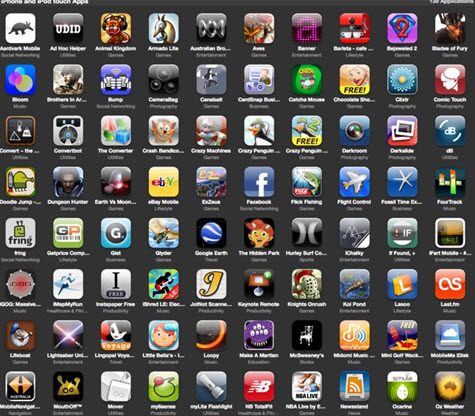
The secret to a successful app is a combination of factors, some of which you can control, others you can’t. In order to do well in the oversaturated app marketplace it’s essential to put yourself in the best possible position for success. App success starts with a great idea, it hinges on execution during development, and it is largely influenced by PR, marketing, timing, and luck.
Of those factors, PR is one that you can control. PR for apps is about how you present the product to the public, garner media coverage, and build users and awareness through proactive outreach. Here are 5 tips to help your PR effort.
Nintendo’s Battle for a Dedicated Gaming Platform: Throw In the Towel for Mobile?
Nintendo has been facing an incredible amount of pressure from existing and new entrants to the gaming space that has led to a decline of its market share. With only so much time in one day to consume media, consumers have a choice between “core” gaming, by way of consoles and PCs, and a more casual experience via browser and on mobile devices; Nintendo has found itself at the service of neither audience.
With the impending launch of Wii U, the company has taken a public stance in support of the core gamer, but is faced with overcoming the challenge of offering a superior online experience to the established leader in the space, Microsoft and its Xbox 360. Its track record with Wii Shop leaves many of us doubtful that it can rebound in this sense. Meanwhile, the mainstream audience that helped propel Nintendo to success in the last decade with the Wii is being abandoned in favor of more costly hardware and complicated controls of the Wii U.
Clearly, Nintendo’s platform is at risk of failure, and investors and Mario fans alike are clamoring for a shift in strategy. Most notable among the call for action lies with the leader and renowned innovator in software and hardware – Apple. Prior to iOS, we had terrible interfaces that were counterintuitive to driving engagement of content and considered a 5% market penetration of games as a success. Since the debut of iOS and the App Store, we’ve seen the market expand to over 600,000 applications and indie developers rising to fame, claiming thousands in revenue, and in some cases millions. Google Play trails closely behind with over 500,000 applications available, although the platform faces piracy issues that leave it second to iOS in terms of developer support.
The new market opportunity is in mobile gaming, as Apple and Google continue to seed global audiences with smartphone devices that spur user engagement with various forms of content, most notably games. Should Nintendo bow to market pressures and take Mario, Zelda and Metroid to mobile devices? Certainly not now, without sacrificing its entire platform and affecting its remaining grip on the game enthusiast market. Let’s analyze the implications of what can be seen as a rash decision in several ways.
Shifts in Revenue
Nintendo’s revenues have taken a hard hit as a result of our shift to mobile platforms. Wii owners are largely content with Wii Sports, and those mainstream consumers have hardly converted into purchasers of additional software, resulting in decreased developer support. The 3DS launched to a cold welcome, but has since slashed prices and achieved moderate success among a stagnant core gaming audience.
 The company recorded its first operating loss of $460 million for fiscal year ending March 31st, much of which can be attributed to the struggling Wii console, DS and 3DS, all falling short of sales expectations and incorporating price cuts in response to increased competitive pressures. We can also assume that much of the capital was allocated to continued support for game developers on each platform and R&D towards Wii U.
The company recorded its first operating loss of $460 million for fiscal year ending March 31st, much of which can be attributed to the struggling Wii console, DS and 3DS, all falling short of sales expectations and incorporating price cuts in response to increased competitive pressures. We can also assume that much of the capital was allocated to continued support for game developers on each platform and R&D towards Wii U.
Meanwhile, Rovio released its 2011 earnings statement, highlighting $67.6 million in profit on $106.3 million in revenues that can be largely attributed to its Angry Birds property, 30% of which came from merchandising and licensing. Based on these numbers, we can estimate that around $70 million was generated by downloads of Angry Birds. Impressive numbers indeed and deserving of praise for the company’s immense success across the various platforms on which Angry Birds can be found.
Yet, Angry Birds is at the top of the food chain, and few (if any) can come close to matching the success that Angry Birds has seen. And in comparison to Nintendo’s current business, it fails to match the numbers of its own game platform business.
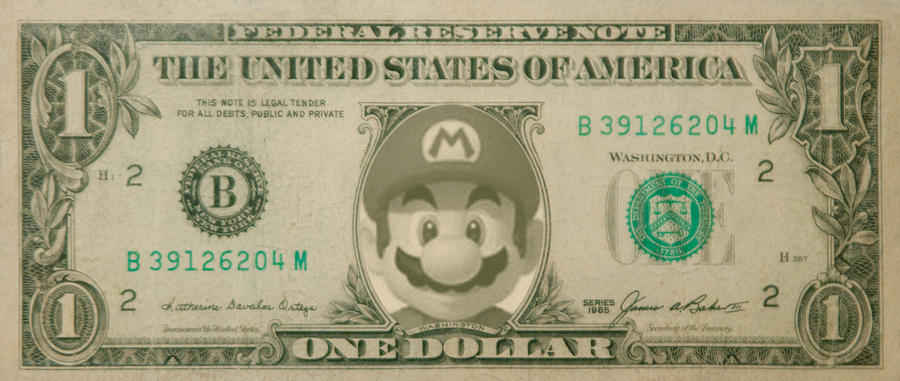
For fiscal year beginning April 1, 2012, Nintendo is expected to achieve $500 million in operating profit according to a forecast estimate compiled through a survey of 20 analysts by Thomson Reuters I/B/E/S. The company controls its own fully integrated platform specifically tailored to gaming, similar to Apple’s hardware/software strategy that spans personal computers and mobile devices, not to mention the impending launch of the rumored iTV. Nintendo sells the hardware and controls the pipeline of software making its way to consumers, consisting of its own popular IP and an ecosystem of developers from which it generates additional revenues with every game purchase.
 Let’s take a look at another example, one that would be on the lower end of Nintendo’s sales figures on a platform that is largely characterized as “struggling” – Mario Kart 7 on the 3DS. The title has so far achieved global sales of nearly 5.5 million units, running at $39.99 a pop. That’s nearly $220 million in revenues, over double Rovio’s business. Now, the margin on packaged goods isn’t really as significant, but even if we’re looking at a 20% profit margin, we’re talking about approximately $44 million in profit from a single title that has been on the market for only 6 months and on hardware that isn’t even considered a mainstream success. Looking forward, it’s not a stretch for Nintendo’s hardware to go strictly digital as industry trends indicate and eliminating the packaged goods channel, increasing margins and generating even greater profits (considering a premium price point maintained through “deeper” gaming experiences of Nintendo hardware). Also, this is just for one title – consider all the other games moving through the 3DS, controlled 100% by Nintendo and generating even greater revenues from both 1st and 3rd party games.
Let’s take a look at another example, one that would be on the lower end of Nintendo’s sales figures on a platform that is largely characterized as “struggling” – Mario Kart 7 on the 3DS. The title has so far achieved global sales of nearly 5.5 million units, running at $39.99 a pop. That’s nearly $220 million in revenues, over double Rovio’s business. Now, the margin on packaged goods isn’t really as significant, but even if we’re looking at a 20% profit margin, we’re talking about approximately $44 million in profit from a single title that has been on the market for only 6 months and on hardware that isn’t even considered a mainstream success. Looking forward, it’s not a stretch for Nintendo’s hardware to go strictly digital as industry trends indicate and eliminating the packaged goods channel, increasing margins and generating even greater profits (considering a premium price point maintained through “deeper” gaming experiences of Nintendo hardware). Also, this is just for one title – consider all the other games moving through the 3DS, controlled 100% by Nintendo and generating even greater revenues from both 1st and 3rd party games.
For Nintendo to trash its own closed gaming platform for Apple’s in pursuit of revenues that have not publicly achieved the scale that Nintendo currently maintains just doesn’t add up. It’s also understandable that Nintendo derides the thought of having to pay Apple the 30% cut, which would make it an even greater challenge to achieve success on the scale of its current games business. A counter argument to this is that Nintendo can offer games on each platform, which doesn’t come without merit, but let’s take a look at this audience.
Can Mario Wear Different Hats?
 For Nintendo to reach the scale of success on Apple’s platform that it currently achieves within the confines of its own closed platform, let’s assume two scenarios: 1) that the game experience is rich enough to sell on the level of Angry Birds (that’s 1 billion downloads!), or 2) that Nintendo sells at a premium with less market penetration. Both situations would have to involve the creation of new games based on its popular IP, rather than a direct port of old games which would only have a minimal impact on Nintendo’s bottom line, not to mention potential disappointment in the controls for some of our most favorite classics that were built for console controls.
For Nintendo to reach the scale of success on Apple’s platform that it currently achieves within the confines of its own closed platform, let’s assume two scenarios: 1) that the game experience is rich enough to sell on the level of Angry Birds (that’s 1 billion downloads!), or 2) that Nintendo sells at a premium with less market penetration. Both situations would have to involve the creation of new games based on its popular IP, rather than a direct port of old games which would only have a minimal impact on Nintendo’s bottom line, not to mention potential disappointment in the controls for some of our most favorite classics that were built for console controls.
The first scenario would be largely targeted at the expanded mainstream audience, one that Nintendo did a great job of penetrating with the Wii and DS. Yet, we have to ask ourselves if the casual gamer of an older demographic and one that skews female would be willing to purchase a Nintendo device if Mario could be had on an iPhone, iPod touch or iPad. Facing limited time in one’s day, chances are that this gamer would skip the purchase of a game-dedicated device and invest $0.99 on a more casual Mario experience. Asking my wife and her 21 year old sister if they’d purchase a new Mario for Wii if they had Super Mario World on their mobile device, they both confidently answered “no way, the app would be good enough”. This would affect the purchasing decision of millions of consumers and cannibalize Nintendo’s gaming platform at a much more significant loss than what it can possibly recover in $0.99 downloads. This isn’t a risk that Nintendo can afford to make, at least not right now.
The second scenario involves a very challenging balancing act of pricing games at a premium, say $9.99, and selling through enough downloads to generate a return on development costs. This would carry an even greater risk of cannibalizing Nintendo’s own platform as these premium games would also come with a deeper and richer gaming experience that could potentially directly compete with Wii U, DS and 3DS game quality. If I have a great Mario title on my mobile devices at $9.99, chances are that I’ll skip the dedicated hardware and $50 price tag for the game.
Additionally, either decision would send a very negative signal to the remaining developers who still believe in Nintendo’s gaming platform, causing additional speculation about those consoles’ impending demise, an even further loss of support in game development, and all but hammering the final nail in the coffin of Nintendo’s platform.
Finally, do we really want an innovator in the gaming space to drop what it does to hop on the iOS bandwagon and solely rely on a touchscreen interface? Is the future of gaming really only about the touchscreen, perhaps with gesture and voice recognition integrated within? Imagine where gaming would be now if Nintendo bowed down to economic pressures back when the GameCube was being labeled as a failure and the Wii and DS never happened. All those Wine, Cheese and Wii parties would have never happened, and one could fairly assume that the Kinect and Move gaming experiences may not have been inspired into market release, perhaps confined to TV integration and never having impacted the games we play.
“Tiiiime Is On My Side, Yes It Is”
 Mick Jagger’s voice resonates in my head as I read that Nintendo is sitting on a pile of cash amounting to $14 billion. Not only is Nintendo expected to turn a profit for fiscal year 2012/13, but it has a war chest to conceive and define the “next generation of gaming” through a fully integrated hardware and software platform, one that’s made exclusively for gamers and consumers seeking a good time. Even though the new Wii U doesn’t spur much hope with industry analysts and other market players, such efforts would be completely lost if confined solely to the hardware and interface design choices of Apple, a company whose business is far greater than the games sector to justify a focus on giving us new ways to experience video games.
Mick Jagger’s voice resonates in my head as I read that Nintendo is sitting on a pile of cash amounting to $14 billion. Not only is Nintendo expected to turn a profit for fiscal year 2012/13, but it has a war chest to conceive and define the “next generation of gaming” through a fully integrated hardware and software platform, one that’s made exclusively for gamers and consumers seeking a good time. Even though the new Wii U doesn’t spur much hope with industry analysts and other market players, such efforts would be completely lost if confined solely to the hardware and interface design choices of Apple, a company whose business is far greater than the games sector to justify a focus on giving us new ways to experience video games.
But how much time does Nintendo really have to make a decision? Even with $14 billion to cover years of operating costs, Nintendo can’t afford to sit around forever. A fair guess at the amount of time that Nintendo has to evaluate the marketplace and give a shot at maintaining a unique gaming experience lies perhaps in the 5-10 year range. Most everyone will understandably argue that this is too much time, but Mario, Zelda and Metroid aren’t going anywhere, and if Nintendo’s own platform faces a demise there will always be an audience ready to pounce on these titles when made available on iOS, Android or any other platform outside the company’s own walls.
Atari, who is celebrating its 40th anniversary this year, has hit a milestone of 10 million downloads just a year after releasing a number of classic and new games based on its renowned IP. Even decades after spending my hard earned weekly allowance in the arcades on Missile Command, Asteroids and Super Breakout, I can count myself among the millions that are downloading these games on iOS and Android (disclaimer: Atari is a TriplePoint client). You can bet that team Mario will have a lasting impact on consumers and maintain brand recognition that results in downloads 5-10 years down the road.
Losing Share to Angry Birds
 Kids everywhere are wearing Angry Birds shirts and socks, while plushies continue to fill the rooms of children around the world. The ~$30 million merchandising/licensing business around this IP is a strong indicator that the property is capturing the mindshare of consumers, certainly at a loss for Mario. This perhaps is the greatest challenge facing Nintendo the longer it waits to nail down and execute a strategy for distribution on iOS and Android. Yet, the company has a history of bringing fans of its various 1st party IP a reason to buy back into the franchises, and the continued power of those brands will no doubt ensure that it continues to sell hardware and games, and that the expanded audiences take notice as well, even if these casual audiences may no longer be willing to purchase a Nintendo gaming device.
Kids everywhere are wearing Angry Birds shirts and socks, while plushies continue to fill the rooms of children around the world. The ~$30 million merchandising/licensing business around this IP is a strong indicator that the property is capturing the mindshare of consumers, certainly at a loss for Mario. This perhaps is the greatest challenge facing Nintendo the longer it waits to nail down and execute a strategy for distribution on iOS and Android. Yet, the company has a history of bringing fans of its various 1st party IP a reason to buy back into the franchises, and the continued power of those brands will no doubt ensure that it continues to sell hardware and games, and that the expanded audiences take notice as well, even if these casual audiences may no longer be willing to purchase a Nintendo gaming device.
When all is said and done, nothing can sway Nintendo from sitting on its bankroll to continue attempts at innovating gaming fun as we know it, not as long as the market opportunities in mobile fall short of the rewards of maintaining its own closed gaming platform. A company that has over 120 years of history shouldn’t be swayed so easily by market pressures to ditch its game-focused platform for a new market that has been hot during the past 4 years (App Store launched in 2008). A survivor of the turbulent gaming market in the 90s and one that has stood up to Microsoft and Sony, we should be cheering on Nintendo to come up with a fresh gaming experience that takes us beyond a simple touchscreen interface dominated by a company that (understandably) deprioritizes gaming among all forms of digital media. Mario and team may one day land on our mobile devices, but considerations for its existing business should be taken into account, and we’ll always be ready to download Nintendo’s games years down the road.
Developer Support Is a Bigger Factor in iPad’s Success Than Some May Think
 Yesterday, Apple unveiled its much anticipated and highly rumored iPad to the masses and easily stole the media thunder from President Obama’s State of the Union address as well as becoming a top trending topic on Twitter, not including all the joke references to feminine hygiene products. After all the hoopla settled though, many tech editors started to really break down exactly what was revolutionary about the iPad and the general consensus seems to be that, well, there is nothing incredibly outstanding.
Yesterday, Apple unveiled its much anticipated and highly rumored iPad to the masses and easily stole the media thunder from President Obama’s State of the Union address as well as becoming a top trending topic on Twitter, not including all the joke references to feminine hygiene products. After all the hoopla settled though, many tech editors started to really break down exactly what was revolutionary about the iPad and the general consensus seems to be that, well, there is nothing incredibly outstanding.
At first glance, the iPad looks like a pageant winner. It boasts the same sleek, attractive contours as the iPhone, which has lured many to purchase it based on aesthetics alone. iPad’s larger screen with its 1024×768 resolution is, of course, very much welcomed in a society that loves to do everything bigger and better. And lets not forget about that enticing price point beginning at $499. Apple could set its retail at twice as much and fanatics would still buy the new peripheral in a heartbeat.
Take away the glitz and glamor though and you still just have a glorified iPod Touch:
– there is no camera present (which means no augmented reality)
– no ability to run multiple applications simultaneously
– Adobe Flash is not supported
However, does this mean that developers will be deterred from creating new apps specifically for the iPad? Not necessarily, but the success of this new device may largely depend on developers making iPad specific apps to help differentiate it from the iPhone/iPod Touch as well as other gaming platforms. Between the three aforementioned downfalls of the iPad, the third one may perhaps be the most hurtful. The Android OS as a gaming platform is already starting to gain momentum despite its OS limitations (mentioned a couple months back). What further distinguishes Android in the gaming space is its ability to run Flash, which could prove to be a major game changer in the mobile gaming industry. With iPad lacking this now almost crucial feature for the next generation of mobile gaming, there’s not much else that separates it from its mobile Apple cousins. Sure, iPad packs a much larger processor, but if the console wars of the last five years have taught us anything it’s that stronger hardware capabilities do not equate to increased 3rd party support which is necessary to drive higher console sales.
Undoubtedly, many developers will initially hop on the iPad app bandwagon but if sales of these apps are lackluster we may just be seeing more iPhone/iPod Touch ports appear on the iPad instead. Though Apple hasn’t given developers anything truly novel to work with, the appeal of success is still there and it may be game developers that really help to shape the future of Apple’s new toy.
Tech Toys, Santa, and Potatoes: Chatting with Engadget’s Ross Miller

In our continued efforts to turn the tables around on journalists all over the tech industry and put them in the interview hot seat, today’s spotlight is with Ross Miller of Engadget. Currently, Ross is an Associate Editor for the leading tech blog and is Engadget’s only contact in California. He has been reporting on all sorts of gadgets and gizmos for the better part of a decade and has an extensive tech-related educational background. We had the opportunity to chat with Ross about his work at Engadget, some things to look forward to in 2010, and poker winning strategies.
TP: First off, thank you for making time for this interview. With the holidays and CES just around the corner, things sure are chaotic.
RM: Very much so. My inbox has begun to rebel against me. It’s creating passive aggressive labels just to get my attention.
TP: Tell us a little bit about your position at Engadget. How did you come to be there?
RM: A lot of it came about as a stroke of luck. The abridged version is that around 2005 while in college (University of Georgia) I was looking for a summer job. The university radio station and newspaper weren’t as keen at hiring, so I took a cold call for then-small time gaming blog Joystiq, with nary a resume bullet point. By some stroke of luck I got the gig, we got bought by AOL a year later, and then towards my graduation back in December ’08 I started helping Engadget out in preparation of CES 2009. Just after that I got hired as Associate Editor and moved out to San Francisco in April 2009.
TP: What are your favorite kinds of gadgets to review and which types do you tend to stay away from?
RM: As much as I love LED-flashing TARDIS model on my desk, I think I could go my whole life without another novelty USB device. What really excites me more than anything else is the mobile industry. Even in just the span of a couple years, the technology has grown leaps and bounds, and I’m really looking forward to what next year brings with especially the Android platform.
TP: Are there any gizmos you’re really looking forward to checking out in 2010?
RM: I’m interested to see how Microsoft and Sony’s gesture controls, a.k.a. Project Natal and yet-to-be-officially named “PS3 motion controller,” pan out. In no way do I think either solution will replace the standard controller — there’s too much tradition and precedent there — but as a complementary input method, I remain cautiously optimistic developers will find some interesting and creative uses. Surely there’s been enough trial and error with Wii titles, right?
TP: When did you first realize you were a true techie?
RM: That’s a tough question, I think everyone around me realized it before I did. If an abundance of math and science classes don’t count, probably my moment of no return was when I realize I could program my TI-83 calculator to make games, and more importantly, function as a cheat sheet for exams. That was probably my first all-in-one pocket computer, in retrospect.
TP: Engadget has been named the blog of the decade by Adweek, how do you feel about that? Do you ever use it as a pickup line?
RM: Oh, all the time! Unfortunately, it usually ends with my fiancé making some disparaging innuendo involving low-power Atom processors (if you don’t get that joke, it’s for the best, really). To be honest, I’m just about to hit my first year with Engadget, so I really don’t take any credit for its incredible popularity. I am a lucky cog in phantasmagorical machine running on unicorn tears, and that reader’s choice award is yet another reminder of how fortunate we are to have such a supportive and passionate readership.
TP: For the PR pros out there, what is the best way to get your attention? What do you look for in a pitch?
RM: Just get to the point, really. I’ll sort through literally hundreds of emails in a day, and if I don’t see a key noun (company, product, technology, etc.) within the first three words, there’s a risk it’ll get lost in the shuffle. Spare the superlatives and give us the facts. If we’re making a dream list here, also take a few minutes to think if this is really something that falls under Engadget’s domain. I understand that there’s a pressure to get your clients’ news out there, and I’m not going to call out any specific company or firm, but constantly blasting us every little newsbrief isn’t going to get our attention. Some of the best PR relationships I’ve established started with a little bit of discussion on what we will and won’t be able to cover, and those are the people whose names always stand out, despite sending less messages.
TP: What’s this thing you have with potatoes? Is it possible to use potatoes to help win a poker game? Could be useful for CES.
RM: Haha. So when we were writing Engadget profiles for the redesign, I actually made a list of different closers I could use, just to lighten up the paragraph a bit. I don’t recall the others, but that struck me as one of the more absurd and relatable options. It’s actually a quote from the Hitchhiker’s Guide to the Galaxy series, specifically Life, the Universe and Everything: “It is a mistake to think you can solve any major problems just with potatoes.” As far as poker’s concerned, your best bet is to draw eyes on a spud and pretend to talk to during hands. People will think you’re crazy, and that facade might work to your advantage. And if you are actually crazy, well, it still might help your game.
TP: You’ve been in San Francisco for almost a year now, what is the strangest thing you have witnessed in the City while living here?
RM: I don’t even know where to begin. In my first month I found myself inadvertently walking in the Bay to Breakers parade, which is miles-long walk chockfull of elaborate costumes and a dash of streaking. Still, if I had to pick one instance, it’d have to be the recent SantaCon 2009: Total Santarchy. Thousands-strong red tide pub crawl? The things that I saw, I’m afraid I can’t even tell to my family pictures.
TP: You can only live and play in one SF district for the rest of your time here, which one and why?
RM: Given my work schedule, I’m still trying to find time to check out the city, so my view of each district is very incomplete. If I’ve gotta pick one now, I’d have to say Mission District just for the sheer geographical size and variety of bars, dance clubs, restaurants, and shops. Ask me again next year, I’m sure I’ll have a different answer at that point!
Don’t Throw in the Towel for Google Just Yet: Android vs iPhone as a Gaming Platform
 Who hasn’t heard of Android lately? Chances are you have at least heard of Verizon’s DROID (running Google’s Android 2.0 OS) since its massive ad campaign started a little more than a month ago. DROID does a whole bunch of stuff that the iPhone may struggle with doing, but there is one thing in our industry that DROID just doesn’t do well at all: act as a viable and profitable gaming platform—at least not yet.
Who hasn’t heard of Android lately? Chances are you have at least heard of Verizon’s DROID (running Google’s Android 2.0 OS) since its massive ad campaign started a little more than a month ago. DROID does a whole bunch of stuff that the iPhone may struggle with doing, but there is one thing in our industry that DROID just doesn’t do well at all: act as a viable and profitable gaming platform—at least not yet.
Android is an appealing gaming platform for developers. It offers open-development whereas iPhone has a proprietary, closed system. The app approval process for Android Market is a walk in the park compared to the iTunes App Store, and Android Market’s registration fee costs $25 against Apple’s $99 SDK requirement. So why aren’t developers jumping on the Android bandwagon by the boatloads? Simply put: consumers aren’t paying for apps on their Android handsets like they are on their iPhones.
Econ 101 will tell you that money lies with the market and at the moment, there is not much of a gaming market for Android. Developers have openly discussed the dismal revenues being generated by Android when compared with iPhone’s shining profits for the same apps. Gameloft recently stated that they sell 400 times more apps for the iPhone than they do for Android. Gameloft even went on to announce that they were cutting back investment for the Android platform (yet a few days later rescinded the statement and reaffirmed support). Why the sudden move to reinvest in Android? Possibly because market trends suggest that Android devices could be a serious contender in the near future.
AdMob recently released statistics showing that 75% of U.S. web traffic browsed on smartphones were from either an iPhone or Android device. Of that 75%, Android is holding on to 20% of the web traffic and shows signs of gaining a bigger market share. Android devices are now being distributed by multiple handset manufacturers and available on most wireless service providers, whereas Apple is the sole manufacturer of phones with the iPhone OS and has an exclusivity deal with AT&T for the moment, therefore limiting its rate of growth. With these factors in mind, it will only be a matter of time before the number of Android users starts to catch up to the number of iPhone users in the U.S., therefore building a substantial base market for Android Market.
With the Android install base set to massively grow, here’s the big question: when are all the sweet Android games coming out? The audience will be there, Android Market is equipped to handle app purchases with ease, what’s the hold up? Unfortunately, the biggest obstacle to Android becoming a worthy adversary in the mobile gaming arena is the operating system itself.
Android can only run apps from its onboard memory. On DROID, that’s 512MB. On every other Android device, it’s only 256MB. The Android OS also runs off this same onboard memory, leaving even less space for apps. Furthermore, SD cards can’t be used to store apps on Android either. iPhone can utilize most of its hard drive for storing apps, currently ranging from 8GB-32GB of capacity. Sega’s Super Monkey Ball was one of the first apps launched for the iPhone last year, weighing in at 36MB, and if you could play it on Android, that would already take up a good size chunk of the app space available to you. Fast forward to today’s apps where graphic intensive games like 2XL’s ATV Offroad are 100MB+ and you can already see the problem with porting these bestsellers to Android. Sure there are much smaller apps available but the capacity, or lack of, in Android devices is what ultimately hinders it from being a major player in the gaming space. Even at only 10MB per app, just a mere handful could be purchased and kept on any Android device. How can a featherweight compete against a heavyweight?
Android has a lot of potential for the mobile game arena. If Google addresses some of the OS technicalities, Android could pack on some serious pounds and add gaming to the list of things DROID does.


